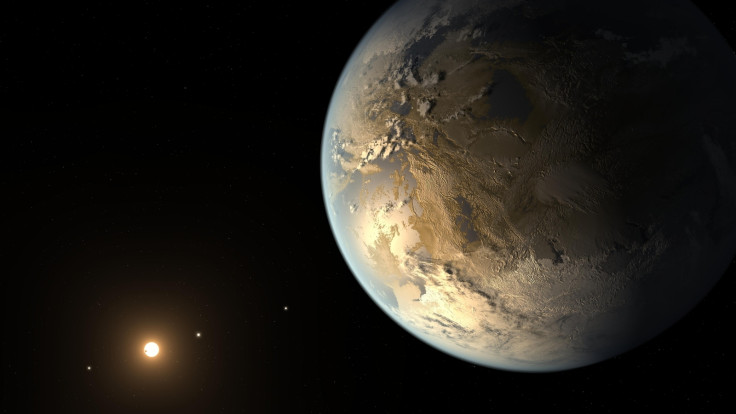NASA mission makes unusual discovery of live planet orbiting around its dead sun-like star
A team of astronomers has found the first example of a surviving giant exoplanet around its dead star.
In an interesting new study, the astronomers have discovered that planets might be able to survive even after the death of their sun-like star. Scientists have found an intact giant planet orbiting around a dense corpse of its star known as White Dwarf.
White Dwarfs are what stars like the Sun become after they have met its end and exhausted its energy. All that is left of these stars is a hot exposed core.
According to a NASA press release, an international team of researchers has discovered a white dwarf called WD 1856+534. Located 80 light-years away from earth in northern constellation Draco, the scientists also discovered an unscathed Jupiter-sized planet WD 1856 b. It is reportedly about seven times larger than earth and goes around its death star every 34 hours. The white dwarf is estimated to be located 11,000 miles across and about 10 billion years old belonging to a triple star system.
"WD 1856 b somehow got very close to its white dwarf and managed to stay in one piece," said Andrew Vanderburg, an assistant professor of astronomy at the University of Wisconsin-Madison. "The white dwarf creation process destroys nearby planets, and anything that later gets too close is usually torn apart by the star's immense gravity. We still have many questions about how WD 1856 b arrived at its current location without meeting one of those fates."
As per the previous theories, when a sun-like star runs out of its energy, it loses all of its outer layers which amounts to 80 percent of its mass. Typically, the nearby objects are said to be "engulfed and incinerated during this process." However, WD 1856 b is the first of its kind to have survived the process.
"We've known for a long time that after white dwarfs are born, distant small objects such as asteroids and comets can scatter inward towards these stars. They're usually pulled apart by a white dwarf's strong gravity and turn into a debris disk," said co-author Siyi Xu, an assistant astronomer at the international Gemini Observatory in Hilo, Hawaii, which is a program of the National Science Foundation's NOIRLab. "That's why I was so excited when Andrew told me about this system. We've seen hints that planets could scatter inward, too, but this appears to be the first time we've seen a planet that made the whole journey intact."
Scientists believe that the exoplanet may have originated 50 times farther away from its present location. It remains unclear what caused its inward push. The scientists have hypothesised several scenarios explaining the survival of WD 1856 b. They believe that other stars of the system and interaction with a "rogue star" may have pushed it inward.
"The most likely case involves several other Jupiter-size bodies close to WD 1856 b's original orbit," said co-author Juliette Becker, a 51 Pegasi b Fellow in planetary science at Caltech (California Institute of Technology) in Pasadena. "The gravitational influence of objects that big could easily allow for the instability you'd need to knock a planet inward. But at this point, we still have more theories than data points."
The discovery has urged the team of researchers to investigate the atmospheres of small rocky worlds in similar situations. Now, scientists believe that NASA's upcoming James Webb Space Telescope could facilitate scientists' further investigation using simulated observations.

It is concluded that there are no other planets found in the WD 1856 system, but team members believe that there could be additional planets that are waiting to be detected. The findings of the study were made using NASA's Transiting Exoplanet Survey Satellite (TESS) and retired Spitzer Space Telescope and were published in the journal named Nature.
© Copyright IBTimes 2025. All rights reserved.





















